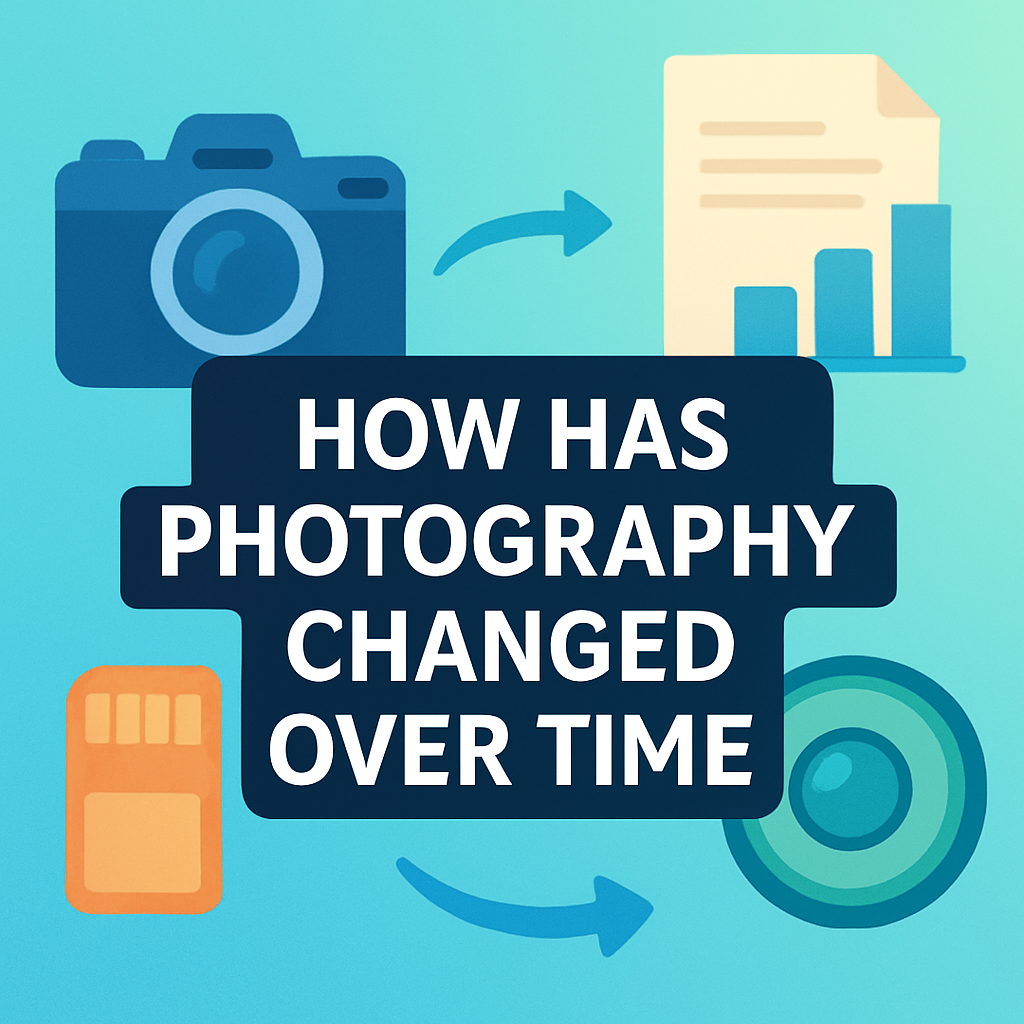
How has photography changed over time? From darkroom chemistry to instant smartphone images, the shift is dramatic and surprising.
In this 2025 guide we trace the big changes in plain words. You will learn how cameras, film, digital sensors, smartphones, and editing tools reshaped the craft and its culture.
We highlight key milestones like the camera obscura, Niépce and Daguerre, Kodak’s Brownie, the first digital sensors, and the rise of computational smartphone photography. We also explain how editing software and AI have changed what photos can show and mean.
By the end you will see why these changes matter for artists, journalists, and everyday users. You will also get simple, practical tips to try film, test phone modes, and protect image authenticity.
Evolution of cameras from camera obscura to smartphones
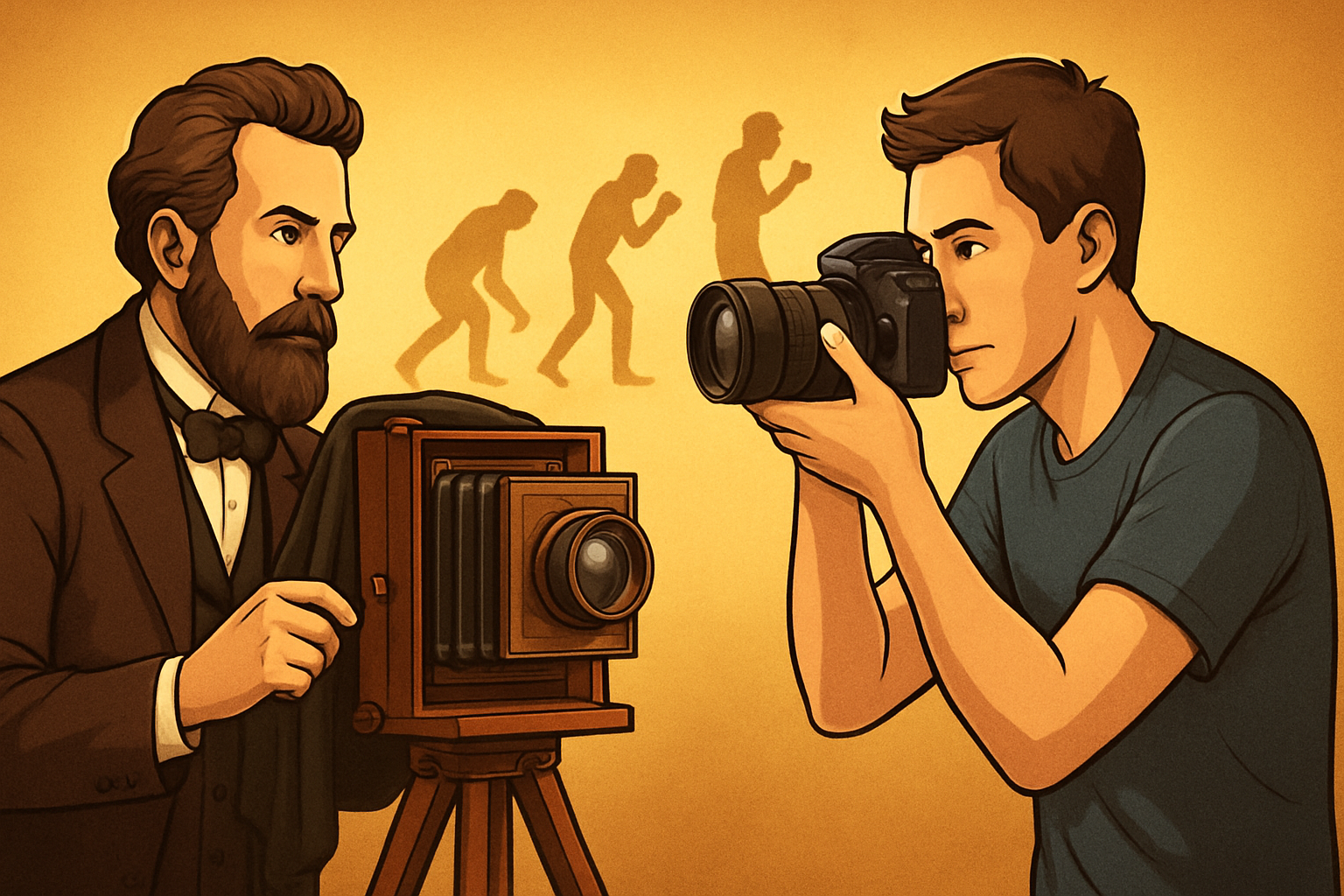
Asked how has photography changed over time, the arc runs from dark rooms and fragile chemicals handled by specialists, through faster films and portable 35 mm cameras, to digital sensors, instant previews, and smartphones driven by computational imaging; what began as minutes-long exposures became near-instant capture, what once needed labs and expertise became everyday, and the camera shifted from a rare tool into a ubiquitous social language.
Long before film, the camera obscura helped artists trace the world by projecting scenes through a tiny hole onto a surface. It was not yet photography, but it proved that light could draw. The dream was to fix that fleeting projection in a permanent way.
In the 1820s, Nicéphore Niépce made the first surviving photograph, a sunlit view from a window that took hours. Louis Daguerre’s 1839 daguerreotype turned that idea into a public sensation. A daguerreotype used a polished silver plate to make one sharp, precious image, cherished like jewelry.
William Henry Fox Talbot’s calotype in 1841 introduced paper negatives, which meant one exposure could yield many prints. The wet-plate collodion process of the 1850s placed light-sensitive chemistry on glass. Exposures grew shorter, and traveling darkrooms let photographers follow wars, mountains, and crowds.
George Eastman’s roll film and the Kodak Brownie in 1888 put photography into ordinary hands. “You press the button, we do the rest,” promised the ads, and they meant it. Mass-market photography was born, and family albums became unofficial history books.
The 1907 Autochrome process brought early color using dyed starch grains. Later, color films like Kodachrome transformed magazines and memory alike, shifting taste away from monochrome. Color changed both how we saw the world and how we remembered it.
Portability took another leap in 1925 with the Leica I, the first practical 35 mm camera. It fit in a coat pocket and favored speed and candid framing. Photojournalism found its sprinting shoes, and everyday life began to look cinematic.
Polaroid’s instant cameras in the mid-20th century offered magic in minutes. The print developed before your eyes, shrinking the distance between taking and seeing. That feedback loop encouraged experimentation and play.
In 1975, Steven Sasson at Kodak built the first digital camera prototype, recording crude black-and-white images to tape. Digital sensors—CCD and later CMOS—convert light into electrical signals instead of using chemistry. By the 1990s and early 2000s, consumer digitals and DSLRs replaced darkrooms with memory cards and screens.
Smartphones finished the miniaturization. After 2007, the phone became a networked camera, computer, and gallery in one. Computational photography—software that blends multiple frames for detail, color, and low light—turned tiny lenses into giant results.
If you ask again, how has photography changed over time, the pattern is clear: exposures went from minutes to microseconds; professional tools shrank into pockets; and making a photograph became as social as speaking. For a broader sweep of the history of photography, archives and museum timelines trace how each step reshaped the way we see.
Transition from film to digital cameras
Film captures light through chemical reactions on emulsion, while digital sensors (CCD or CMOS) turn light into numbers. That change altered every step, from exposure choices to how we store and share. ISO, once baked into a roll of film, became a dial you can change between frames.
Milestones mapped the pivot: the CCD was invented in 1969; Sasson built his digital prototype in 1975; the 1990s saw the first commercial DSLRs and consumer digitals; by the late 2000s, mirrorless cameras cut the mirror and grew smaller and faster. If you love dates, a concise photography timeline lays out the shift.
Instant review changed habits overnight. Photographers began checking histograms, refining focus, and bracketing without fear of wasting film. RAW files—unprocessed sensor data—preserve maximum detail, so creative decisions moved from the moment of exposure to the desk.
The economics flipped too. The marginal cost per shot dropped close to zero, encouraging higher frame rates and bolder experiments. Sensor size, dynamic range, and noise performance became the new variables, while megapixels fueled a race that mattered less than color depth and latitude.
The industry felt the quake. Many film labs closed or pivoted, and a company like Kodak, once dominant, stumbled as point-and-shoot cameras gave way to phones. Meanwhile, new brands and models thrived by embracing digital-first features and fast firmware updates.
Culturally, freedom to test ideas led to a more playful, iterative craft. I remember timing prints in a dim school darkroom; today I push exposure and white balance in seconds. The heart of photography remains the same, but the hands work differently.
Tip: Want to taste the old workflow? Shoot one roll of 35 mm and note how patience changes your composition. Then photograph the same subject with a digital camera, and compare the contact sheet to a burst sequence.
Smartphone cameras and the democratization of photography
Early camera phones made casual snaps; the iPhone in 2007 made a pocket camera that updated itself. Each year brought better sensors, brighter lenses, and computational tricks like multi-frame HDR, portrait blur, and night mode. Software began to matter as much as optics.
Social platforms turned images into conversations. Instagram and Snapchat shaped vertical framing, filters, and the rhythm of sharing. Citizen journalism grew as bystanders recorded events, and the 2020 smartphone video of George Floyd helped drive global protests and official investigations.
Technically, the phone stacks many exposures and aligns them to beat noise and blowouts. It tags GPS coordinates and embeds EXIF, which quietly logs settings and time. The result is searchable memory, organized by location, faces, and even objects.
Market effects were swift. Point-and-shoot cameras collapsed as the default social camera became the one already in your hand. Traditional makers shifted toward mirrorless systems, fast primes, and pro bodies, while phones chased low-light and zoom with periscope optics and smarter algorithms.
We now take over a trillion photos every year, most on phones. If you ask how has photography changed over time, the biggest shift might be who holds the camera: nearly everyone, nearly always. That access rewrites what gets documented and whose stories are seen.
Tip: Curious about computational photography? Photograph the same dim scene with and without night mode, then zoom in. Look at detail in shadows and color in highlights to see what the software is doing.
Advances in image editing software and digital manipulation
In the darkroom, retouching meant knives, dyes, and patience. In 1990, Adobe Photoshop put layers, masks, and pixels under a cursor, and later Lightroom added nondestructive RAW workflows that preserve the original. Mobile editors carried that power to the train and the couch.
Editing changed aesthetics as much as cameras did. Presets and global filters made certain looks travel fast, from teal-and-orange to matte film emulations. On social media, skin smoothing and sky replacements are a swipe away, shaping what we think “good” looks like.
AI pushed things further. Content-aware fill can rebuild a background; neural filters can restyle faces and lighting; generative tools can fabricate entirely new scenes. Deepfakes blur the line between photograph and illustration, raising questions about truth in an age of synthesis.
Journalism tightened rules in response. Many newsrooms allow tonal corrections but forbid adding or removing content, and some use provenance tools to verify metadata. Photographers increasingly keep signed RAW files and maintain clear chains of custody for sensitive work.
Tip: If you care about authenticity, keep original RAW files and preserve EXIF when exporting. Use verification tools when publishing newsworthy images, and label composites or AI-assisted edits with clear captions.
Photography’s cultural, social, and economic influence today
From Mathew Brady’s Civil War plates to Dorothea Lange’s Depression portraits and Vietnam’s front-line photos, images have shaped public memory and policy. In the present, smartphone images continue that thread, recording protests, disasters, and daily life at human scale. It is a living archive, built in real time.
Photography also guides art and advertising. Susan Sontag wrote that “to photograph is to appropriate the thing photographed,” a reminder that making an image is never neutral. Each platform encourages certain poses and colors, and those cues feed back into how we see ourselves.
The economics of pictures have shifted more than once. Stock agencies gave way to microstock, which then made room for brand partnerships and the influencer economy. Professionals now mix assignments with prints, workshops, and subscriptions to build sustainable careers.
Ethics and privacy sit at the center of this new visibility. Surveillance cameras, drones, and bystander photos challenge ideas of consent and control. Copyright travels awkwardly in a copy-and-paste world, and laws race to catch up with AI-generated lookalikes.
Looking ahead, drones expand the vantage point while VR and AR extend the frame into space. Generative AI will demand stronger labeling and literacy so viewers can tell what was captured and what was constructed. The craft may change, but the desire to witness and share will remain.
When we ask how has photography changed over time, the deeper answer is that photography has changed us in return. It rewired memory, accelerated news, and reshaped power by giving more people more ways to be seen. Few inventions have so clearly changed history with such a simple gesture as pressing a button.
Tip: Before posting a candid of someone else, ask for consent and consider context. Respect boundaries, and treat every image as part of someone’s story, not just content for a feed.
What People Ask Most
How has photography changed over time?
Photography has moved from chemical film to digital sensors and smartphones, making it faster and more accessible to everyone.
How has photography changed over time for beginners learning the craft?
Beginners now have easy access to affordable cameras, free online tutorials, and instant feedback through social media and editing apps.
How has photography changed over time for everyday use and sharing photos?
Photos are now instantly shareable and editable on phones, which makes documenting moments and communicating visually much simpler.
Are film cameras obsolete now that photography has changed over time?
No, film is still used for its unique look and learning value, but digital tools dominate everyday photography for convenience.
Does the change in photography over time mean I need expensive gear to take good photos?
No, strong composition and lighting matter more than gear, and many great photos are taken with basic cameras or smartphones.
What common mistakes do beginners make when learning how photography has changed over time?
Beginners often rely too much on auto modes or filters instead of practicing composition and lighting, which are the foundations of good photos.
Will photography keep changing and how should I prepare as a beginner?
Yes, stay curious, learn core skills like composition and exposure, and be open to new tools and editing techniques as they emerge.
Final Thoughts on the Evolution of Photography
Think of the whole arc like a long roll of film—frame 270 marks the point when photography moved from slow chemical craft to an instant, digital language everyone can speak. That shift—from darkrooms and specialists to pocket-sized cameras and AI-driven edits—means you get the power to record, experiment, and shape stories with far less technical friction.
We opened by asking how has photography changed over time, and the article answered by tracing key milestones—camera obscura, daguerreotype, film, sensors, and smartphones—and showing what each change meant for practice and culture. Still, there’s a caution: wider access brings more images but also more manipulation and privacy trade-offs, so verification and judgment remain as important as gear.
The people who benefit most are curious makers—students, hobbyists, visual journalists, and pros willing to mix craft with new tools—because they can use technology to amplify their vision without losing the eye that makes a photo matter. Keep experimenting, keep asking questions, and enjoy how each new tool gives you fresher ways to see the world.


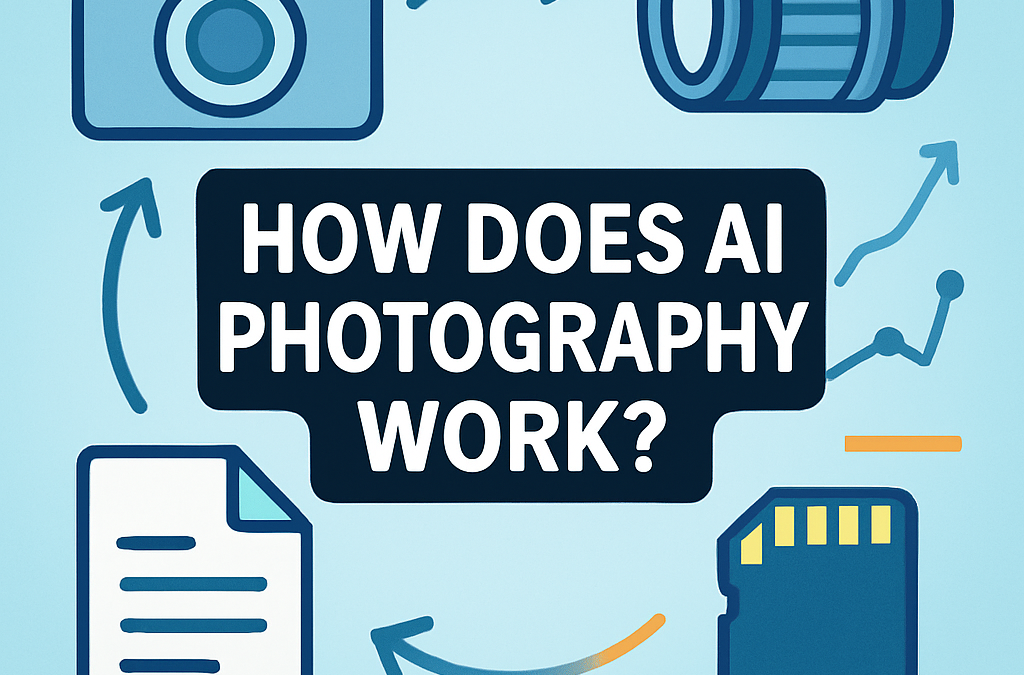
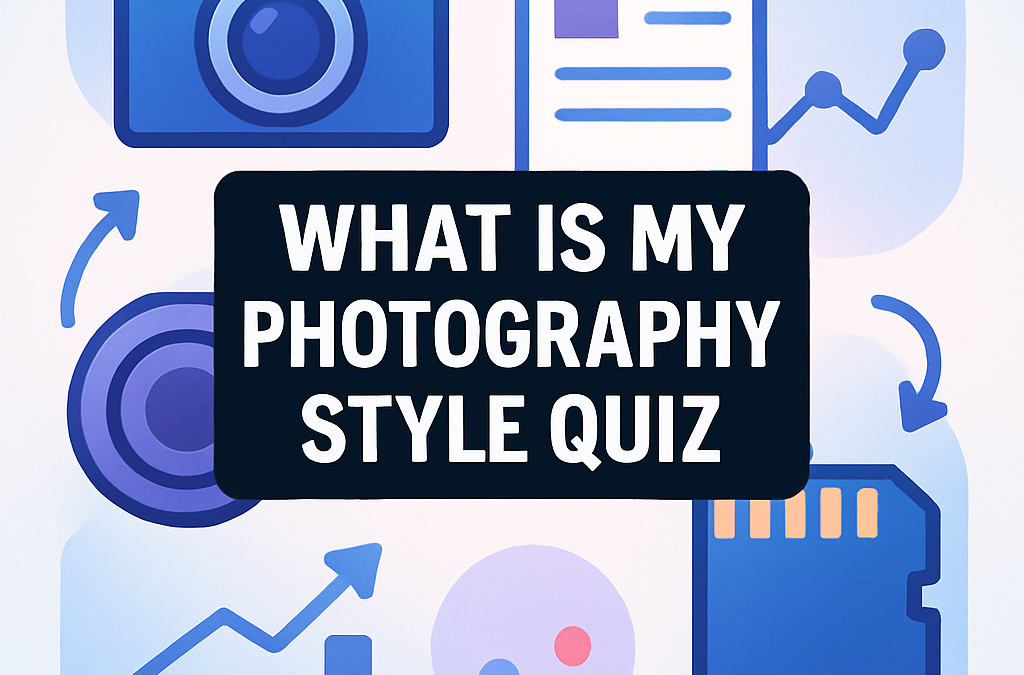
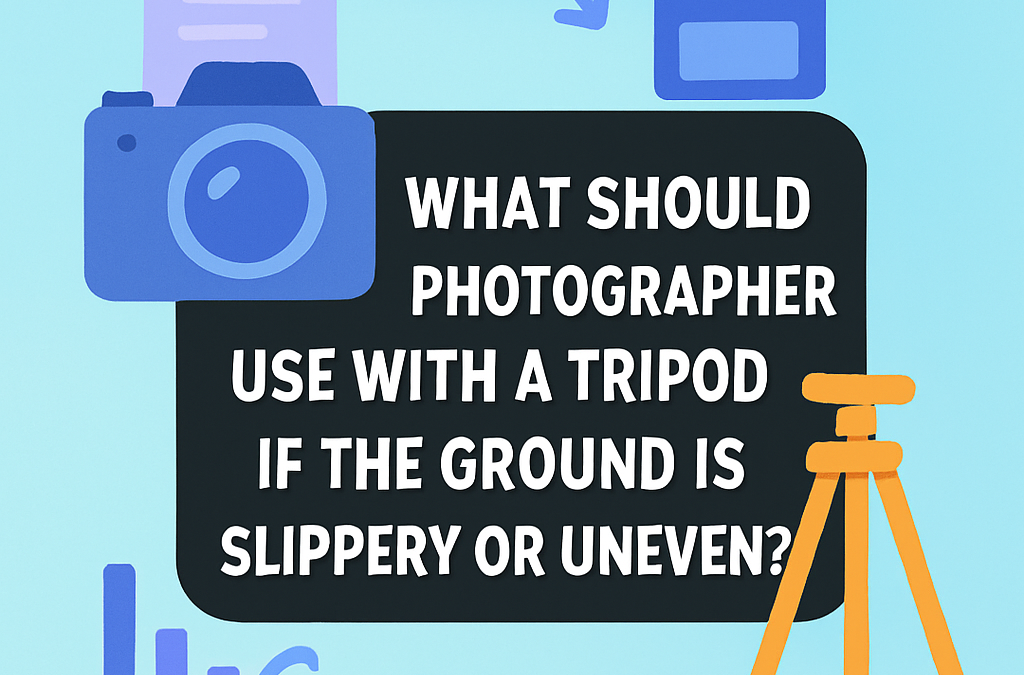
0 Comments